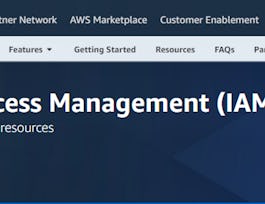This course teaches you how to calculate the return of a portfolio of securities as well as quantify the market risk of that portfolio, an important skill for financial market analysts in banks, hedge funds, insurance companies, and other financial services and investment firms. Using the R programming language with Microsoft Open R and RStudio, you will use the two main tools for calculating the market risk of stock portfolios: Value-at-Risk (VaR) and Expected Shortfall (ES). You will need a beginner-level understanding of R programming to complete the assignments of this course.


Financial Risk Management with R
This course is part of Entrepreneurial Finance: Strategy and Innovation Specialization
Taught in English
Some content may not be translated

Instructor: David Hsieh
16,111 already enrolled
Included with 
Course
(240 reviews)
Details to know

Add to your LinkedIn profile
28 quizzes
Course
(240 reviews)
See how employees at top companies are mastering in-demand skills

Build your subject-matter expertise
- Learn new concepts from industry experts
- Gain a foundational understanding of a subject or tool
- Develop job-relevant skills with hands-on projects
- Earn a shareable career certificate


Earn a career certificate
Add this credential to your LinkedIn profile, resume, or CV
Share it on social media and in your performance review

There are 4 modules in this course
This module goes over the versions of R (R Studio and Microsoft Open R), the data source (FRED at the Federal Reserve Bank of St. Louis), and the calculation of returns.
What's included
5 videos2 readings7 quizzes
This module covers how to calculate value-at-risk (VaR) and expected shortfall (ES) when returns are normally distributed.
What's included
4 videos1 reading8 quizzes
This module covers how to test for normality of returns, and how to calculate value-at-risk (VaR) and expected shortfall (ES) when returns are not normally distributed.
What's included
4 videos1 reading7 quizzes
This module covers how to test for the presence of volatility clustering, and how to calculate value-at-risk (VaR) and expected shortfall (ES) when returns exhibit volatility clustering.
What's included
9 videos1 reading6 quizzes
Instructor

Offered by
Recommended if you're interested in Finance

Coursera Project Network

Google Cloud

Coursera Project Network

Duke University
Why people choose Coursera for their career




Learner reviews
Showing 3 of 240
240 reviews
- 5 stars
65.83%
- 4 stars
20.41%
- 3 stars
4.58%
- 2 stars
2.50%
- 1 star
6.66%
New to Finance? Start here.

Open new doors with Coursera Plus
Unlimited access to 7,000+ world-class courses, hands-on projects, and job-ready certificate programs - all included in your subscription
Advance your career with an online degree
Earn a degree from world-class universities - 100% online
Join over 3,400 global companies that choose Coursera for Business
Upskill your employees to excel in the digital economy
Frequently asked questions
Access to lectures and assignments depends on your type of enrollment. If you take a course in audit mode, you will be able to see most course materials for free. To access graded assignments and to earn a Certificate, you will need to purchase the Certificate experience, during or after your audit. If you don't see the audit option:
The course may not offer an audit option. You can try a Free Trial instead, or apply for Financial Aid.
The course may offer 'Full Course, No Certificate' instead. This option lets you see all course materials, submit required assessments, and get a final grade. This also means that you will not be able to purchase a Certificate experience.
When you enroll in the course, you get access to all of the courses in the Specialization, and you earn a certificate when you complete the work. Your electronic Certificate will be added to your Accomplishments page - from there, you can print your Certificate or add it to your LinkedIn profile. If you only want to read and view the course content, you can audit the course for free.
If you subscribed, you get a 7-day free trial during which you can cancel at no penalty. After that, we don’t give refunds, but you can cancel your subscription at any time. See our full refund policy.

